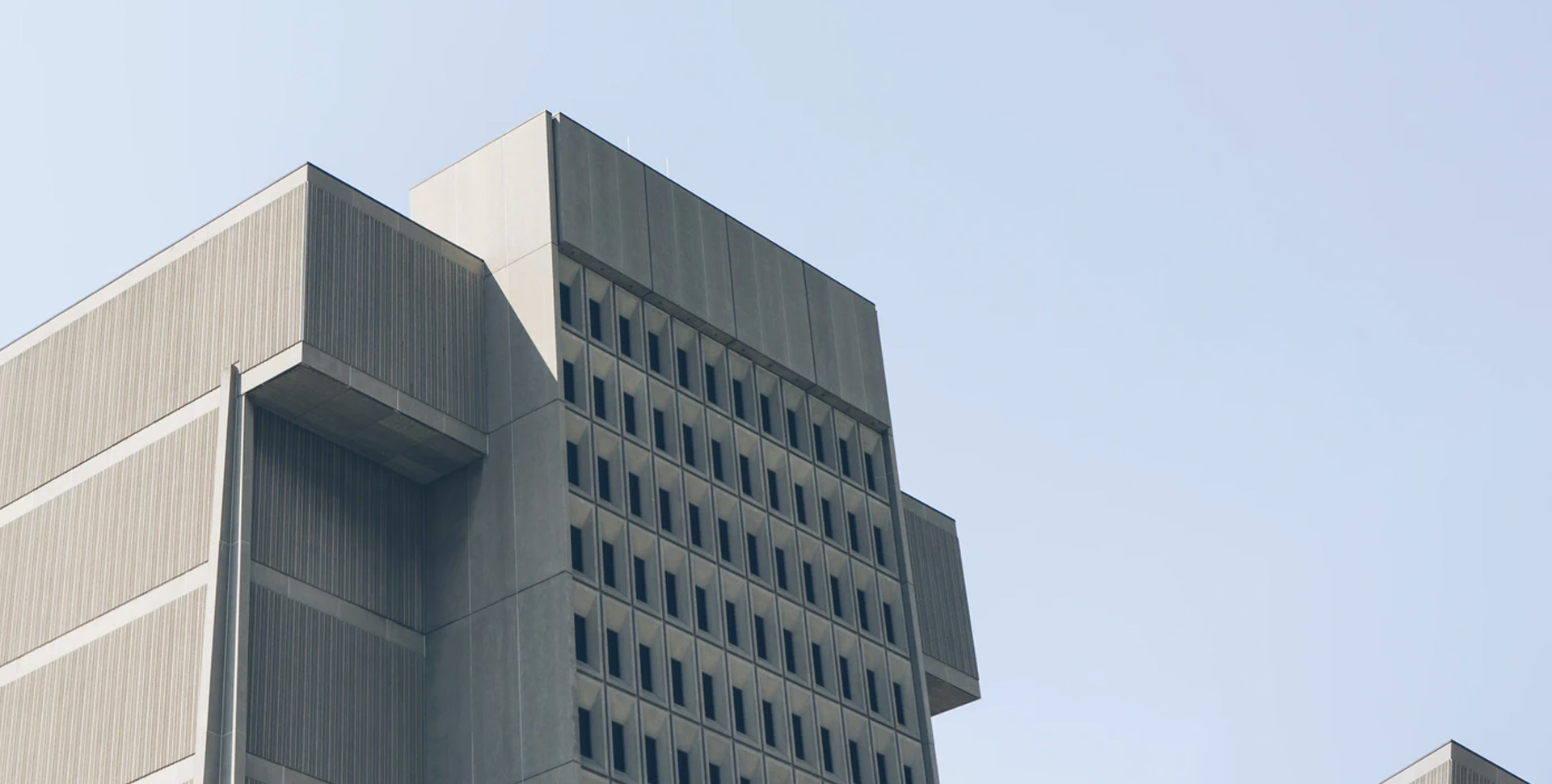The Straight Line Newsletter — Issue #8
The Straight Line Newsletter is a newsletter that appears several times throughout the year. Articles cover a broad range of topics that engage Ontario architects insured by Pro-Demnity, other OAA members – whether in practice or engaged in other businesses – and anyone with an interest in the profession. We encourage readers to suggest topics. Please send any suggestions to: editor@pd-straightline.com
In This Issue
- New CEO at Pro-Demnity: Bruce H. Palmer
The Board of Directors of Pro-Demnity Insurance Company is pleased to announce that Bruce H. Palmer has joined the Company as President & CEO. - Ontario First Nations Land
Our news media provide us with unsettling daily reminders that, in First Nations communities, there is a backlog of necessary infrastructure investment. For Ontario architects who may be considering work in this sector, it is important to bear in mind that the circumstances are unique, and that different rules and regulations apply. - Fire: The Discussion Still Rages
Another newsworthy item, whose prevalence and destructive powers seem to be increasing, fires are creating both physical devastation, and growing professional concerns.
— The Editor
New CEO at Pro-Demnity: Bruce H. Palmer

Right: Incoming CEO Bruce Palmer.
The Board of Directors of Pro-Demnity Insurance Company is pleased to announce that Bruce H. Palmer has joined the Company as President & CEO
Former President & CEO Byron Treves has retired after 33 years of dedicated service, but continues as Executive Advisor until July 2020.
Bruce is a senior insurance executive, who brings a wealth of experience in the insurance industry in sales/distribution, business development, general management leadership and client services. Prior to joining Pro-Demnity on May 13 of this year, he was Chief, Member Services for the Ontario Medical Association, as well as CEO of OMA Insurance Inc. In these capacities, Bruce has stressed the importance of creating membership value through the provision of unique services and programs. Bruce’s previous positions also include: President, Ontario Physicians Services, Inc.; and Vice President, Professionals Division, Insurance Institute of Ontario.
Bruce holds an MBA from Queens University and a BA (Sci), Engineering Science from the University of Western Ontario. Within the insurance profession, he holds degrees from the Global Risk Management Institute (CRM) and the Insurance Brokers Association of Canada (CAIB). Bruce is a Fellow Chartered Insurance Professional (FCIP) granted by the Insurance Institute of Canada.
Applicable Building Codes for Construction of First Nations Land in Ontario
Notes:
- United Nations Human Rights Council, “Report of the Special Rapporteur on the rights of indigenous peoples”, James Anaya (2014 Advance Unedited Version) at page 10, paragraph 26.
- The Canadian Council for Public-Private Partnerships, “P3’s: Bridging the First Nations Infrastructure Gap” Toronto, 2016 at page 3.
- Karen Weslowski, “Construction on First Nations Land: Determining the Applicable Building Code,” in Lloyd’s Brief: Canadian Legal Perspectives. Toronto: Miller Thomson LLP, October 3, 2018
- First Nations lands governed by the Indian Act, R.S.C. 1985, c. I-5 are distinct from unceded First Nations territories which are not governed by the federal government.
- The regulation of on-reserve construction projects falls under federal jurisdiction through the powers granted by the Indian Act, R.S.C. 1985, c. I-5.
- James Hopkin, “Mississauga First Nation wants to open cannabis store this spring,” SooToday [Sault Ste. Marie] (December 22, 2018).
- Mississauga First Nation, Mississauga First Nation Housing Policy, Section 12.1 – FNMHF –New Construction (Amended June 15, 2016).
- Indigenous and Northern Affairs Canada, Protocol for INAC-Funded Infrastructure (August 19, 2016) at section 1.1.
Fire
Introduction
The Persian philosopher Zarathustra held that four “elements” – earth, air, water and fire – are sacred, being essential to life. But as essential as they are, daily news headlines remind us of their increasingly destructive power.
Of these four elements, fire, is particularly worrisome. Global warming effects are “turning many of our forests into kindling during wildfire season,” 1 causing increased frequency and duration of wildfires, worldwide. In the built environment, fires are also causing global concern, not due to natural circumstances, but to human error.
The Grenfell Tower fire in London continues to cause concern among professionals, regulators and insurers, internationally. Two years after the event, the effects of the fire and the subsequent inquiries are being felt profoundly.
Fire and Insurance
If you doubt that an urban fire can have long-term international consequences, consider The Great Fire of London, which burned from September 2 to September 5, 1666. This was no ordinary building fire, since:
Fire was a frequent hazard in the cramped, crowded streets packed with wooden buildings, all heated with open fires and lit with candles. People responded quickly and most fires were extinguished almost as quickly as they started.2
By the time The Great Fire was finally extinguished, thousands of buildings had been destroyed, and 20% of Londoners were homeless. Fifteen years later, the city having been rebuilt, the first fire insurance company was founded and, shortly afterwards, the first “fire brigade.”
The Grenfell Tower Effect
On June 14, 2017, a rapidly spreading fire engulfed the Grenfell Tower in London’s Kensington district,3 claiming 72 lives and leaving hundreds homeless. The fire immediately became not just a local tragedy, but an international source of concern. In a modern city, how could a building be erected that seemingly broke every rule of fire prevention and control?
Of special concern was the exterior cladding, which had been poorly installed and, furthermore, had never been properly tested. In subsequent tests, it showed tendencies to encourage, rather than prevent, the spread of fire and, even more worrying, this material, or its variants, had been used in buildings all over the world.
Were they all now in imminent danger and/or uninsurable?
The Lacrosse Apartments
As a case in point, a rapidly spreading fire in November, 2014, resulted in substantial damage to the exterior cladding of the Lacrosse apartment building in Melbourne Australia’s Docklands. Fortunately, no lives were lost. The event had predated the Grenfell fire by two-and-a-half years, but the subsequent enquiry didn’t wrap up until February 28 of this year. In his judgment, the Australian judge found the building’s architects liable for 25% of the A$5.7 million award.4
Clearly, the spectre of the Grenfell Tower fire hung over not just the Melbourne tribunal, but also the entire Australian architectural profession. It was all too familiar. The cladding material used in the Lacrosse building was an aluminum composite panel (ACP) with a combustible polyethylene core that had been substituted for the originally selected panel with a non-combustible mineral core.
Failing to note the critical difference between the original and the substitution, the architects had approved the substitution based on “visual characteristics only.” In the judge’s opinion, they had missed the opportunity to “ensure that its design intent […] was fulfilled.” He noted, furthermore, that the architects were also guilty of failing to act on their initial misgivings about the substitution, thereby abandoning “the position that an architect might otherwise occupy in the hierarchy of responsibility.” 5
Another Australian news item, headlined “Lacrosse fire ruling sends shudders through building industry consultants and governments,” reported that the tribunal findings were “So shocking […] that the national president of the Australian Institute of Architects suggested in an email to members […] that they might need to seek counselling.”6 The reporter estimated that there are 1,000 buildings in Australia covered with combustible
ACPs which, if litigated, could result in legal fees exceeding A$1 billion – a conservative figure of A$1 million (Can$920,000) per building. Multiply that figure by the number of buildings in the world similarly clad in panels with combustible cores, in countries more populous than Australia. This may give some indication of why architects the world over “might need to seek counselling.”
Not to mention their insurers.
Notes:
- “Is Global Warming Fueling Increased Wildfire Risks?” Union of Concerned Scientists, July 24, 2018. https://www.ucsusa.org/global-warming/science-and-impacts/impacts/global-warming- and-wildfire.html.
- “London Burning,” David Worsfold, Insurance Post, Sept., 2016, quoting Prof. David Bland https://www.academia.edu/37624996/Londons_ Burning_Fire_insurance_after_the_Great_Fire_ of_1666.
- See The Straight Line, Issue 6.
- https://architectureau.com/articles/judge-finds- architect-proportionately-liable-for-lacrosse-fire-damages/ 2019-03-05.
- Ibid.
- http://theconversation.com/lacrosse-fire- ruling-sends-shudders-through-building- industry-consultants-and-governments-112777 2019-03-04.
Our Contributors

Jaspal Sangha is an Associate at Miller Thomson. His broad practice encompasses insurance litigation and commercial litigation. Within his insurance litigation practice, Jaspal has a focus on professional negligence and commercial general liability. Jaspal can be reached at:
Miller Thomson LLP
Scotia Plaza, 40 King Street West, Suite 5800
P.O. Box 1011
Toronto, Ontario M5H 3S1
Direct Line: +1 416-595-8627 Fax: +1 416-595-8695
jsangha@millerthomson.com
millerthomson.com

Karen L. Weslowski is a Partner at Miller Thomson. She practices insurance defence litigation, and construction and commercial litigation. Karen has represented clients at all levels of court, including the British Columbia Supreme Court, the British Columbia Court of Appeal, the Federal Court of Canada, and the Supreme Court of Canada. Karen can be reached at:
Miller Thomson LLP
Pacific Centre, 400 – 725 Granville Street Vancouver, British Columbia V7Y 1G5
Direct Line: +1 604-643-1290 Fax: +1 604-643-1200
kweslowski@millerthomson.com
millerthomson.com
The Straight Line is a newsletter for architects and others interested in the profession. It is published by Pro-Demnity Insurance Company to provide a forum for discussion of a broad range of issues affecting architects and their professional liability insurance.
Publisher: Pro-Demnity Insurance Company
Editor: Gordon S. Grice
Design: Finesilver Design + Communications
Address: The Straight Line c/o Pro-Demnity Insurance Company 200 Yorkland Boulevard, Suite 1200 Toronto, ON M2J 5C1
Contact: editor@pd-straightline.com
Pro-Demnity Insurance Company is a wholly owned subsidiary of the Ontario Association of Architects. Together with its predecessor the OAA Indemnity Plan, it has provided professional liability insurance to Ontario architects since 1987.
Questions related to the professional liability insurance program for Ontario architects may be directed to Pro-Demnity Insurance Company. Contact information for the various aspects of the program can be found on the Pro-Demnity website: www.prodemnity.com
Pro-Demnity Insurance Company makes no representation or warranty of any kind regarding the contents. The material presented does not establish, report or create the standard of care for Ontario architects. The information is by necessity generalized and an abridged account of the matters described. It should in no way be construed as legal or insurance advice and should not be relied on as such. Readers are cautioned to refer specific questions to their own lawyer or professional advisors. Letters appearing in the publication may be edited.
Efforts have been made to assure accuracy of any referenced material at time of publication; however, no reliance may be placed on such references. Readers must carry out their own due diligence.
This publication should not be reproduced in whole or in part in any form or by any means without written permission of Pro-Demnity Insurance Company. Please contact the publisher for permission: publisher@pd-straightline.com

